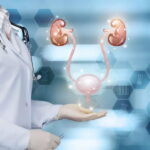Scientists, researchers, and doctors are pushing hard to obtain a better understanding of how to fight, treat, and cure cancer. In this article, we explore the different types of technologies being used to fight cancer and what the future may hold for those desperately seeking help.
Advanced Telehealth
Telehealth became the new norm when the novel coronavirus changed how patients sought their providers. Everyday health needs, physical exams, and non-emergent treatments can funnel through telehealth programs, maintain physical facility health standards, and minimize exposure risks.
This advance in technological health care also opened new doors for fighting cancer and allowed more patients to stay home and receive their care. Providers can maximize the safety of their patients and place virtual visits on demand. Additionally, patient monitoring systems with remote access create efficiency for providers and increase in-home chemotherapy plans.
Genetic Alterations
Genetic alterations, medically known as gene editing, are revolutionizing the cancer care sector. With the help of CRISPR, one of the biotech industry’s most innovative tools, scientists and researchers can now do the unimaginable and edit the genetic coding of a live cell.
CRISPR acts like a pair of medical scissors with a strand of DNA and implants, edits, or erases gene adaptations with precision. Though CRISPR is relatively new for cancer treatment and research, it is used as an immunotherapy tool to better treat or understand various forms of cancer. It also helps scientists understand how treatments interact with genes.
Artificial Intelligence
Artificial intelligence evolves every day with more insights and offerings. Medically speaking, the goal of AI is to create a digital duplicate to begin studying various genetic formations and sequences. This evolution allows researchers and scientists to study and recreate treatments and biological systems to understand their interactions within a live cell better. The primary objective is to apply all learned data to more personalized and well-rounded treatment plans.
Cryo-Electron Microscopy
Many handheld cameras will capture spectacular photos, but none can compare to the images captured with cryo-electron microscopy. Cryo-EM is one of the different technologies being used to fight cancer as it captures images of molecules with incredibly high-resolution rates and helps inform researchers about the various molecule behaviors that take place. These distinct behaviors pave the path for cancer treatment plans and how well they will or won’t work and interact on a molecular level.
Infinium Assay Workflow
Infimum Assay Workflow is the distinct study and analysis of SNPs, or single nucleotide polymorphisms. SNPs are among the most common genetic modifications. Researchers use this data to help map and understand the genetic formations that play a role in specific cancer developments and interactions within a patient’s genetic workflow. Infinium Assay is breaking barriers in research, understanding, and ancestry applications. Medicine has come a long way, with an even longer road ahead. One thing is for certain: technological advancements are breaking barriers in how we discover and understand various cancers and treatments.
Read Also
- Optimizing CT Protocols: The Hidden Key to Efficiency and Cost Savings in RadiologyIntroduction: Why CT Protocol Optimization Matters Computed Tomography (CT) is a cornerstone of modern diagnostic imaging, providing critical information across nearly every medical specialty. However, maximizing the value of CT — both clinically and financially — requires more than just advanced hardware. The real secret lies in the optimization of CT protocols. When CT protocols… Read more: Optimizing CT Protocols: The Hidden Key to Efficiency and Cost Savings in Radiology
- The Role of Carbide Burs in Modern Dental ProceduresAs a result of this procedures need to be well coordinated and to this end, precision tools are used by dental practitioners. Among the most essential tools in a dentist’s arsenal are carbide burs, which have revolutionized various aspects of dental work. Today’s dentistry cannot work without these tools as they are both strong, sharp,… Read more: The Role of Carbide Burs in Modern Dental Procedures
- Detection of Diabetic Retinopathy: The AI AdvantageDiabetic retinopathy (DR) is a leading cause of blindness among working-age adults, affecting millions worldwide. The prevalence of DR is alarmingly high, affecting an estimated 34.6 million people globally. In the United States alone, it is estimated that 7.7 million adults have some form of diabetic retinopathy. How Does Diabetes Affect the Eye? Most of… Read more: Detection of Diabetic Retinopathy: The AI Advantage
- Advances in Digital Health: Transforming Modern HealthcareThe healthcare landscape is undergoing a seismic shift with the advent of digital health technologies. These innovations are not just modern conveniences; they are transformative tools that bridge gaps in accessibility, improve patient outcomes, and empower individuals to take charge of their health. From wearable devices to telehealth and artificial intelligence, digital health is creating… Read more: Advances in Digital Health: Transforming Modern Healthcare
- The Latest Advancements in Urology ProceduresUrology, the branch of medicine concerning the urinary system and male reproductive organs, has seen remarkable advancements in recent years. Technological innovations have led to more precise, less invasive, and increasingly successful procedures that promise better outcomes for patients. From state-of-the-art robotics to personalized medicine approaches, the field of urology is evolving at a rapid… Read more: The Latest Advancements in Urology Procedures






